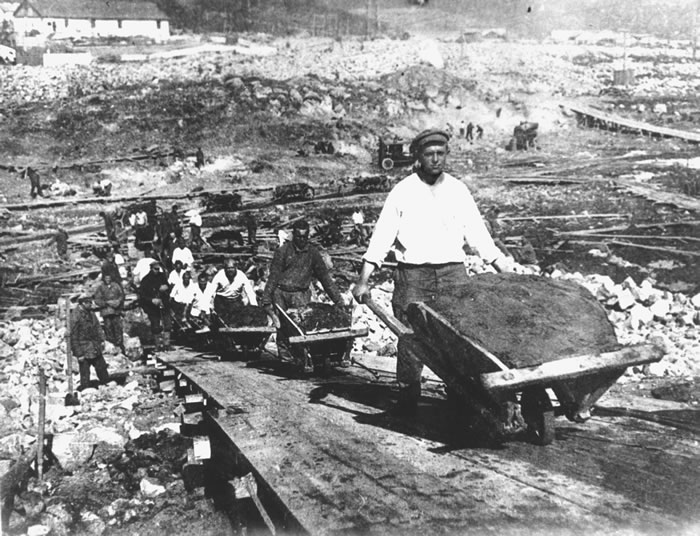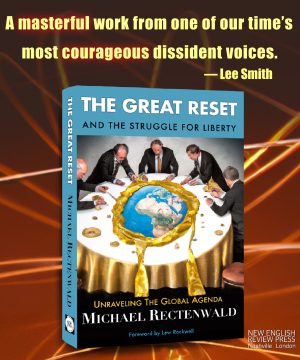
by Armando Simón
During Stalin’s rule, the paranoia that is inherent in Communism knew no bounds. Millions of ordinary people became victims. They were arbitrarily labeled as spies, as Trotskyites, as wreckers, as saboteurs, as” agents of Western imperialism,” as well as all manner of labels. Some were targeted on purpose, such as the Ukrainian farmers that resulted in a famine which killed millions of Ukrainians. Others for what we would think of as insignificant remarks, or acts, such as the child that threw a paper wad and hit a bust of Stalin, obviously an assassination attempt. Sometimes a false denunciation came from a neighbor who wanted the victim’s larger apartment to be turned over to the snitch or from a wife who wanted a quick divorce. One architect was arrested because, from the air, one of the buildings that he had designed and was constructed looked like the half of a swastika. The families of arrested individuals were affected as a result. And, once in custody, after a conveyor belt of beatings and prolonged sleep deprivation, the victim would name names, which resulted in further arrests. From physicists to factory workers to farmers to government ministers to doctors, anyone and everyone could end up in the Lubyanka. If not killed, millions of victims ended up in the concentration camps of the gulag as slave labor.
The only bright side to this horror was that oftentimes Communists themselves ended up as victims, including members of the secret police, the very same thugs that had earlier taken part in the terror. It would not be an exaggeration that the most dangerous country to be a Communist in during the 1930s and 1940s was not Nazi Germany but the Soviet Union.
Karma can be a bitch.
A number of memoirs of life and death in the gulag were written by survivors: Ease My Sorrows, Journey Into the Whirlwind, An American in the Gulag, The Gulag Archipelago, Till My Tale is Told, Memoir of a Gulag Actress, Twenty Years in a Siberian Gulag, Keep Forever, to name a few.
Much fewer are the fictional tales based on their experiences in the horrors of the Gulag. One is, of course, One Day in the Life of Ivan Denisovich by Solzhenitsyn, a thin book. Its notoriety in the Soviet Union came because it was the only work published at the time in spite of rigid censorship on a subject that had touched every Russian family, but no one could talk about. Although it did not detail the brutality, the harshness was still evident; I suspect that if it had been more explicit, it would most certainly not have been published. Another work by Solzhenitsyn is The First Circle; the title refers to the first circle of hell, a comparatively benevolent status, where specially selected imprisoned scientists were put to work on projects important to the Party. There were no beatings, no criminals present, the food was good, there was some freedom of movement inside the prison, and scientists could continue working in their fields. The latter may sound strange, except that scientists who ended up in Vorkuta or Kolyma, later complained that even their vocabulary had atrophied.
If that was the first circle of hell, the last circle was Kolyma, where a gold mine was situated in the northern taiga, where it is dark the entire day for nine months of the year. Prisoners there were undernourished slaves—literally slaves—who were worked to death in the mine. Kolyma Tales is a collection of short stories by a survivor, Varlam Shalamov (interspaced are short nonfiction essays; perhaps Shalamov tired and decided to skip creating characters and situations to simply describe what was in his mind and what he experienced).
The motto above the Kolyma’s camp gate read: “Work is honorable, glorious, valiant, and heroic.”
It is similar to the motto about the Auschwitz camp gate: “Work sets you free.”
In Kolyma we see brutality at its worst, where a dead convict’s body was dug up in order to get his underwear and socks, where an extra piece of bread became an obsession, one’s hand became permanently shaped like a claw from wielding a pickaxe. Life was worth next to nothing in Kolyma, not only from the authorities, but from the criminal element, who were looked upon favorably by the authorities as opposed to the politicals. As for emotions like sympathy, love, honesty, compassion, they vanished as readily as one’s health, and it was every man for himself—all except for the criminal gangs, which is why they were so powerful in the camps. Civilization was ground into the dust.
The criminals, however, had respect for the occasional Scheherazade who could tell stories, a different one each day.
One other author needs to be mentioned although she herself did not experience the Gulag but is the child of a Lithuanian refugee. Ruta Sepetys is presently a rising star in historical fiction. When the Russians invaded in 1939, a sizeable portion of the population was deported to Siberia. Between Shades of Gray is a novel about this trauma.
I would like to end with a quote from Martin Amis, Koba the Dread:
“This isn’t right:
Everyone knows of Auschwitz and Belsen. Nobody knows of Vorkuta and Solovetsky.
Everyone knows of Himmler and Eichmann. Nobody knows of Yezhov and Dzerzhinsky.
Everyone knows of the 6 million of the Holocaust. Nobody knows of the 6 million of the Terror-Famine.”
While I was reading Amis’ book, which had Stalin’s picture on the dustcover, I was asked by five different people who was the man in the picture; not only had they never seen the picture, they had never even heard of Stalin.
Armando Simón is originally from Cuba, a retired psychologist, author of Orlando Stories and various stage plays.
- Like
- Digg
- Del
- Tumblr
- VKontakte
- Buffer
- Love This
- Odnoklassniki
- Meneame
- Blogger
- Amazon
- Yahoo Mail
- Gmail
- AOL
- Newsvine
- HackerNews
- Evernote
- MySpace
- Mail.ru
- Viadeo
- Line
- Comments
- Yummly
- SMS
- Viber
- Telegram
- Subscribe
- Skype
- Facebook Messenger
- Kakao
- LiveJournal
- Yammer
- Edgar
- Fintel
- Mix
- Instapaper
- Copy Link









4 Responses
If we named all the criminals there’d be no need for a separate listing for spectators.
Hear ye, hear ye!
Please tell me the difference between today’s Democrats and other Left Wing parties and Stalin.
The only thing I can see is not the vision the Left has for us – that is identical. In the US we still have a Constitution, a lot of Red States and our 2nd amendment. The Anglosphere and Western Europe have very little to fight back with.
The phony response to the CCP Wuhan/Fauci Flu is a precursor of what to expect.
The 2nd Amendment is worthless if it is not put into use.